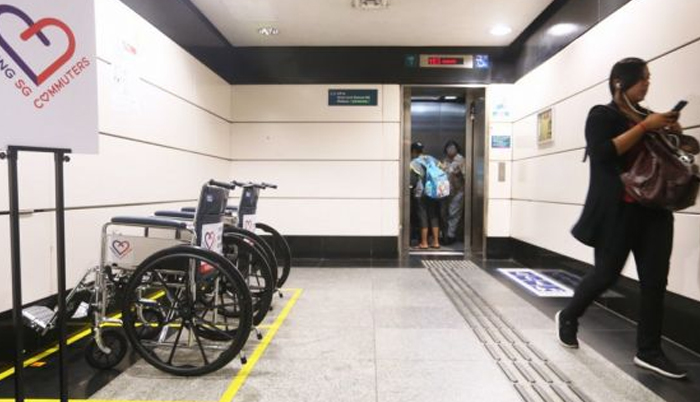![]() Home > Singapore
Home > Singapore
Tests For NSL’s Signalling System Could Continue Till Next May

![]() July 15th, 2017 | 12:15 PM |
July 15th, 2017 | 12:15 PM | ![]() 2448 views
2448 views
SINGAPORE
Testing of the new train signalling system on the North-South Line (NSL), which has been behind many of the delays commuters have had to put up with in recent weeks, could go on until next May, said SMRT Trains’ chief executive officer Lee Ling Wee on Friday (July 14).
This is the first time that the train operator has given a timeline on when the testing, which has been implemented in phases since March, will end.
However, the testing could wrap up even earlier, if all goes well, with the signalling system expected to take between four and six months to stabilise, he said in a joint media briefing with the Land Transport Authority (LTA).
Once the new signalling system has stabilised on the NSL, testing of the new system may extend to the East-West Line (EWL) in December, during passenger hours, said Mr Chua Chong Kheng, LTA deputy chief executive (infrastructure and development).
“We will make sure that the lessons learnt from the North-South Line are ported over to the East-West Line. The completion of the NESWL resignalling project will bring about long-term benefits to our commuters,” Mr Lee added.
Testing of the new signalling system began in March, starting with off-peak hours testing, with full-day trials being conducted since May 28.
However, the past few weeks have seen a string of train faults and delays due to various reasons.
To resolve teething issues that have occurred as a result of the new signalling system, both SMRT and the LTA announced that a new software update will be installed on the NSL after passenger service hours on Friday (July 14).
However, the also warned that “possible initial faults” during the software update cannot be ruled out, and sought commuters’ understanding.
“I think this period of seven weeks, we have encountered some teething issues. This software upgrade is meant to address all the technical issues that we have (been) faced with so far during the testing,” said LTA’s Mr Chua.
The software patch, which will be installed on all NSL trains and stations, will address issues such as train stopping accuracy during wet weather and alignment of train-platform doors. It is also set to improve the performance of the signalling system’s main server.
Mr Lee also said that recent train faults and delays experienced by commuters were not all due to the new signalling system.
“Not every incident and delay on North-South and East-West Lines over the past few weeks was caused by the new signalling system… From time to time, we still encounter signalling faults due to the ageing legacy system,” he said.
Adding that the new signalling system is definitely more superior than the old system, Mr Lee said: “It is important that we get over this transition phase, where we rigorously check the system during passenger service and resolve all the initial teething problems. This is an necessary process that we must undertake because the NSEWL is an operational line.”
In fact, he said, data showed that delays due to teething problems relating to the new signalling systems have reduced over the past weeks.
“Next year when we do the EWL, we may or may not encounter an increase in the number of incidents. Given the lessons learnt from the NSL, we are hopeful that the chances are lesser. Eventually, we are hoping for a much lower level of incidents compared to before we started this project,” Mr Lee added.
Source:
courtesy of TODAY
by TAN WEIZHEN
If you have any stories or news that you would like to share with the global online community, please feel free to share it with us by contacting us directly at [email protected]